11192a AN EXTREMELY RARE COLLECTION OF EIGHT LARGE-SCALE WATERCOLOR DRAWINGS OF ARTILLERY BUILDINGS OF THE KÖNIGLICH KAISERLICHE TECHNISCHE MILITÄR AKADEMIE Austrian. Circa 1783. Measurements: See below.

Research
Of watercolor, ink and pencil on paper.
Each measuring:
0372 – Height: 23 5/8” (60cm); Width: 33 5/8” (85.1cm)
0374 – Height: 24 ½” (62.5cm); Width: 38 5/16” (97.3 cm).
0375 – Height: 25” (63.3cm); Width: 37 ¾” (95.8cm).
0388 – Height: 23 ½” (59.7cm); Width: 33 7/8” (86cm).
0389 – Height: 22 7/16” (57cm); With 32 7/8” (83.5cm).
0407 – Height: 24 5/8” (62.4cm); Width: 29 1/8” (74cm).
0408 – Height: 21” (53.2 cm); Width: 29 1/8” (74cm).
0420 – Height: 21 5/8” (55cm); Width: 29 15/16” (76cm).
These remarkable drawings, dating from the early 1780s, are exceptionally rare survivals of works produced by officers at the Königlich Kaiserliche Artillerie-Corps School in South Bohemia, which then formed part of the Austro-Hungarian Empire (today the Czech Republic). They represent a survey of various structures contained within the vast artillery training and testing complex set up by the Austrian army at Budweis and its neighboring mountain towns of Bergstadtl and Moldautein. Figure 1 depicts maps of Budweis1 and Moldautein taken from surveys of Bohemia executed by Officers of the Military Topographic Service circa 1783. The outlines of fortifications and extensive systems of buildings are clearly visible on the maps.
During the eighteenth century Austria and Prussia were vying to dominate the German-speaking regions of central Europe. By the end of the century it was accepted that field artillery was the most important element of a land army, which could decide the outcome of a battle; as the great Swedish Military Commander Carl Gustav Armfeldt (1666-1736) stated, “the fate of an army often depends on how well or badly its artillery is served.”2 Artillery was perceived as the key to military dominance, and Austria and Prussia both focused resources on gaining the upper hand.
The Austrian defeat by the technically superior Prussian forces in the War of Austrian Succession in the 1740s prompted Empress Maria Theresa to order a wholesale reformation of her military.3 Artillery was seen as an area in need of special attention and became the responsibility of one the Empress’s most senior generals, Joseph Wenzel von Liechtenstein (1696-1772). She had noted his skill and enthusiasm, immediately giving him free reign to revolutionize the Austrian artillery. He was given authority over both the previously separate divisions of Field and Fortress Artillery and saw fast success at the Battle of Piacenza in 1746 against the French and Spanish.9 In 1748 Joseph Wenzel acceded as Prince of Liechtenstein after the unexpected death of his elder brother, giving him access to his family’s considerable private income, which he then applied in his efforts to improve the military practices, a level of financing that was far beyond what was available from the state.
Lichtenstein’s first major initiative as General-Atillerie-Direktor was founding the aforementioned Königlich Kaiserliche Artillerie-Corps school, also known as the Technische Militär Akademie, in 1744. This institution was designed to bring Austria’s young elite up to the requirements of their time, and drew as its teachers the leading mathematicians and engineers of the day. The Akademie would educate 50 young men at any one time, who would study there for 7 years, with the summer months being devoted to physical drills; it would take a highly talented student no less than 13 years to become an officer.
Lichtenstein improved overall expertise and instituted Draftsmanship or Zeichnungen as part of the training curriculum at the Artillery Academy giving rise to the expertise that could produce drawings at the level of sophistication demonstrated in the present examples.4 Class material for the lessons included the study of calibers, drawing and measuring the barrels and lafetten, examination of the field pieces and the munitions, operation of all manner of weapons, and trajectory-theory of bullets and bombs, etc. There was a particular focus on mathematics, including arithmetic, algebra, geometry, trigonometry, “Kegelschnitt” (conic section), general mechanics, optics and perspective, and experiments in physics. Furthermore, there was a class in “War Architecture,” where students would learn about the construction of battery-buildings, mines, arms factories, and building of powder magazines. Fortification class and practical measuring arts were focused mostly on the recording of fortifications “and the exceptionally fine Drawing arts of military structures, which was cultivated with particular devotion.”5 The schooling could be described as ‘higher artillery-education.’6 It was regarded as secret, taught solely to current and aspiring officers, and dissemination of any of the material was strictly prohibited. The students were drawn from the sons of high-ranking officers, as well as the nobility and the wealthy.
Lichtenstein also established, at his own expense of some 50,000 florins a year, annual Practice and Examination conventions for gunners at Budweis, so impressive they were attended by the Imperial couple. Here soldiers could practice using full sized guns, build batteries, and judge distances and trajectories using a quadrant, to ensure that these camps were as effective as possible. This specifically included the artillery camp at Moldautein, where “the shot and shell were aimed against targets, and all the exercises carried out there were an accurate and realistic representation of what went on in combat and sieges. Everything was executed with a seriousness which allowed no place for pedantry or triviality.”7 Well-appointed material-depots were also constructed here; it was known that a large laboratory was part of the vast complex and that cutting edge military experiments were carried out, such as the establishment of “ricochet tables,” charts used to calculate firing distance and angles.
The present drawings were executed in the year 1783 by a select group of military officers, called bombardiers, who were considered the most highly trained and technical division of the 1st Artillery Regiment of the Austrian army. The collection represents finely detailed elevations for storehouses, workshops, and artillery and munitions depositories. Each is signed and dated, and includes a table listing various aspects of each building, which can be summarized as follows:
TAB. IV: Of the artillery wagon depository at Bergstätl [sic], Sub. No. 6; drawn and sketched by Frantz Bauer, Bombardier, 1783. Like previous illustrations this building contains ramps to upper and lower levels, lightning rods outside the building, a well, a sentry box, and fire ladders.
TAB IV: Of the wagon depository, situated at the Moldauthein mountain, belonging to the K.K. Fuhrwesen. Sketched by Bombardier Halla, Drawn by Franz Kunert Canonier, of the 1st Artillery Regiment, 1783. This plan shows the placement of wells, lightning rods, vents, a sentry box, and openings for stairs.
TABELLA V: The wagons depository which is situated on the Moldauthein mountain, belonging to K.K. Fuhrwesen. Sketched by Bobardier Halla, drawn by Johann Hambers. u: c: korp : of the 1st Artillery Regiment, 1783
TAB. VI: Of the artillery wagon depository in Bergstädtl. Sketched by P. Siré, drawn by Anton Saintmartin, bombardiers of the 1st Artillery Regiment. This plan includes a well, lightning rods, ramps to move wagons from one level to another, and fire ladders.
TABELLE VII: Of the 80 klafft (496 ft) long artillery wagon depository Sub. No. 9 at Bergstadtl. Sketched and drawn by Berhard Haltmaier, Bombardier of the 1st Artillery Regiment, 1783. This drawing is similar to the one above, but also delineates a canal for drainage of water from the mines.
Tab. VIII: Of the artillery wagon depository, Sub. No. 10. Sketched and drawn by H. Graf Kinigl, Cadet, 1783. The buildings illustrated in these ground plans were a remarkable 496 feet in length.
TABELLE XXI: Workshops of the carpenters, woodworkers, saddlers, Riemer (leather strops), wagoner’s, Drechsler (wheels) in the builders yard at Budweis. Sketched by Anton Hawliczeck, under lieutenant, and Georg Schneider, Bombardier. Drawn by Ludwig de la Roque Rabany, under lieutenant, of the 1st Artillery Regiment, 1783.
TABELLE XXIII: Of the carpenter’s woodshed, the wagoner’s woodshed and fire engines hut which are at Budweis, behind the artillery manufactory. Sketched and drawn by Johann Gottfried Gringmuth. Can: corporal of the 1st Artillery Regiment, 1783.
Footnotes:
- Conveniently, the 3rd Military Survey of 1877 includes a certain, now famous, Bräuhaus (brewery) in very close proximity to the Budweis artillery camp.
- Christopher Duffy, The Austrian Army in the Seven Years’ War, Volume One, New York 2000, p. 270
- Ibid.
- Ibid., 271.
- Dolleczek, Anton. Geschichte Der Österreichischen Artillerie Von De Frühesten Zeiten Bis Zur Gegenwart: Nach Authentischen Und Grösstentheils Officiellen Quellen Verfasst. Wien: Kreisel & Gröger, 1887. 420.
- Lehre
- Duffy, 277
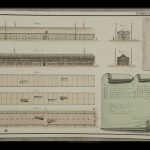
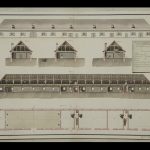
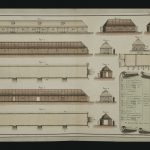
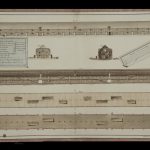
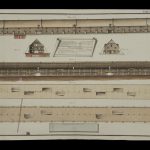
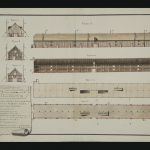
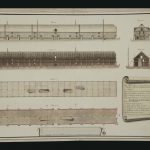
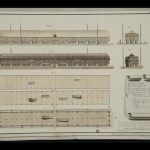
Comments are closed.